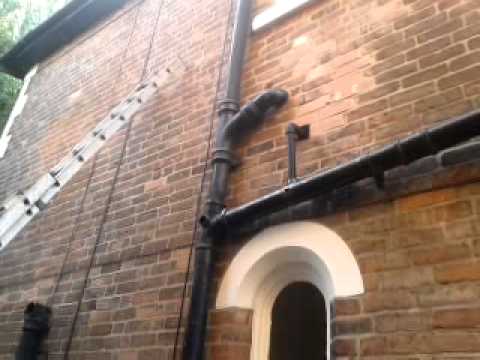Table of Contents
In this article, we will discuss stack pipe.
1. Introduction
Stack pipe may be defined as the vertical part of a plumbing drainage system of soil, waste, or vent piping rising through one or multi-stories of a building.
Stack pipes are known as Soil Vent pipes.
Stack pipes are used to drain off wastewater. All the wastewater should be passed to the septic tanks and sanitary sewers. Without, the proper design of stack pipe may lead to leakage of foul gases in the building.

| Read Also: Systems Of Plumbing |
2. Types of Plumbing System
Plumbing is a system that flows fluids for a long-range of applications. Plumbing utilizes pipes, valves, plumbing fixtures, tanks, and other tools and materials to flow fluids.
The plumbing system of the structure is categorized mainly by the types that are adopted in the plumbing of the drainage work of the building. There are four types of plumbing systems are follows;
a. Single stack system
b. One pipe system
c. One pipe system partially ventilated
d. Two pipe system
a. Single Stack System
In the case of the single stack system, there is a single vertical soil pipe that is fixed and all the waste matter comes from the kitchen bath and water closet is discharged into it.
There is a single pipe in this system that also acts as a vent pipe. The single stack system is economical but the effectiveness of the system depends upon the water seal.
b. One Pipe System
In the one-pipe system, there is a different vent pipe that is given in addition to the waste collection pipe.
The one-pipe system is more useful as compared to the single stack system. The different vent pipe delivers ventilation to the water seals of all the traps.
In this system there is one soil pipe is supplied from which all the waste matter from the bath, sink, water closets, etc are discharged in the pipe.
c. One Pipe System Partially Ventilated
In the one-pipe system partially ventilated there is a middle arrangement is given between the one-pipe system and the single stack system.
In this system also there is only one soil pipe is delivered through which all the waste matter from the water closets bath and sink are discharged into this pipe.
The windpipe is also supplied for ventilation to the traps of the water closets.
d. Two Pipe System
In the two-pipe system, there are two sets of pipes are used one pipe is a soil pipe that is connected to the soil fixtures such as urinals and water closets.
The second pipe is best to water pipe which is used to collect the wastewater from the bath and kitchen.
In the two-pipe system, the soil Pipe and waste pipe both are provided with separate vent pipes. There is a total of pipes that are required in the two-pipe system.
The two-pipe plumbing system is more expensive as compared to other types of plumbing.
3. Factors Affecting Stack Pipe Design
The 4 factors that affect stack pipe design are as follows:
i. Strength and Durability
ii. Cost
iii. Weight
iv. Resistance to Abrasion

4. Internal Stack Pipe Regulations
a. Building regulations state that the opening of ventilating pipes should be located at least 900mm above any window in a building that is within three meters of the pipe.
b. Also, the vent should be protected with a wire cage or a perforated cover to prevent debris or birds from entering them.
5. Advantages of Stack Pipe
i. It helps to drain off wastewater.
ii. It guides wastewater to the septic tanks and sanitary sewers
6. Disadvantages of Stack Pipe
i. It is costly to buy.
ii. It needs routine maintenance.
iii. Chance of blockage.
| Read Also: Pipe Joints |

